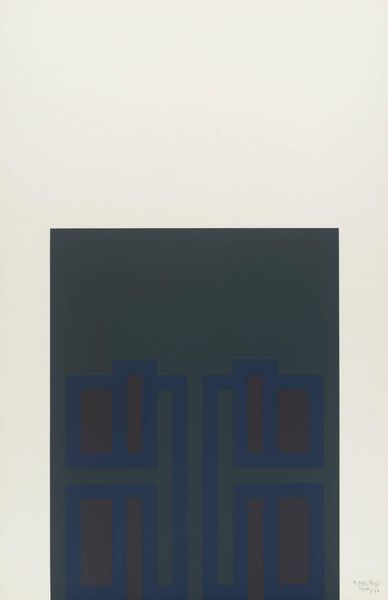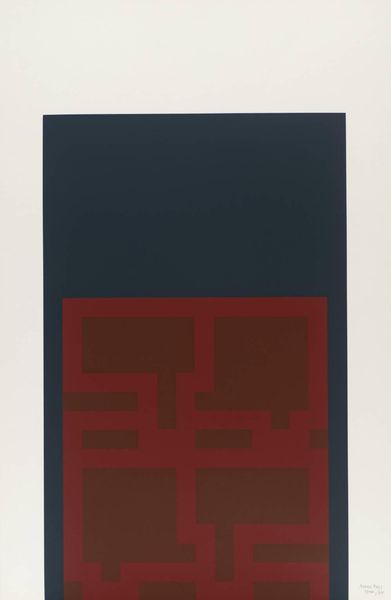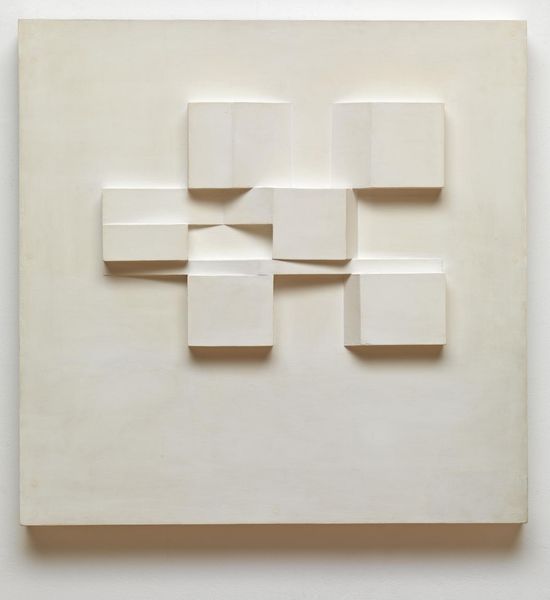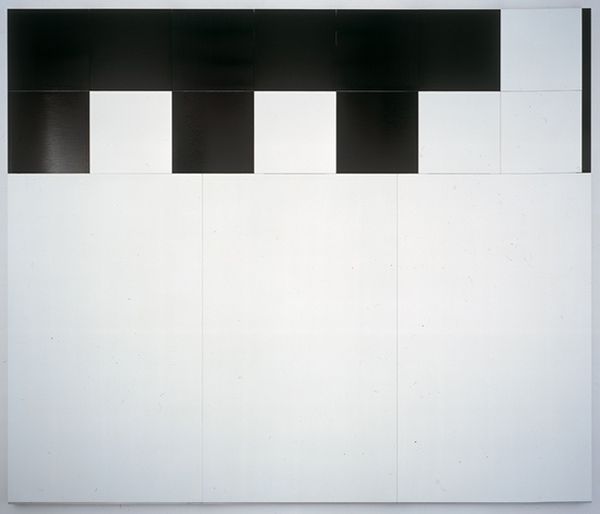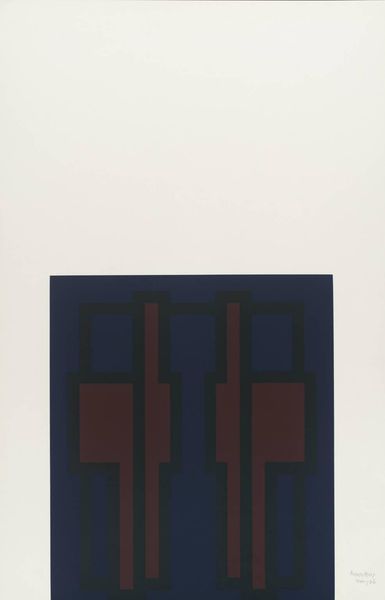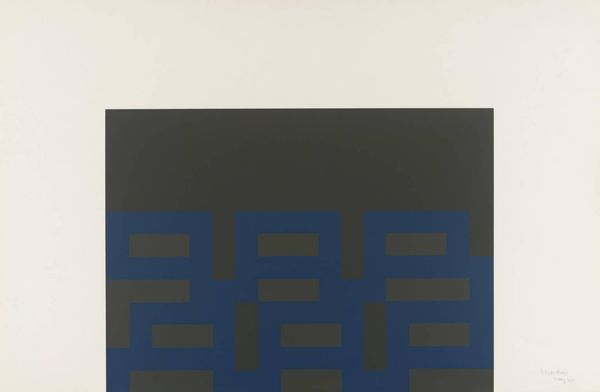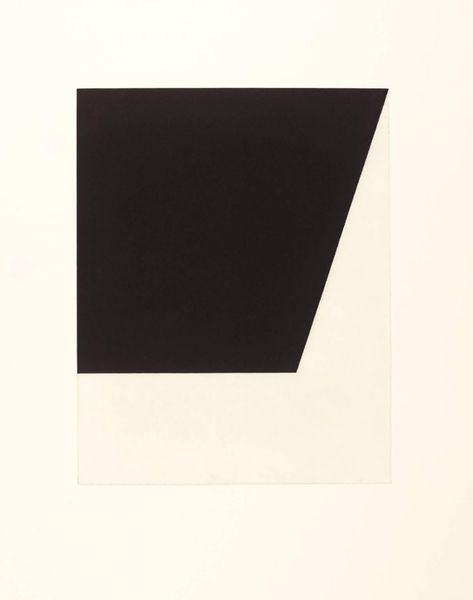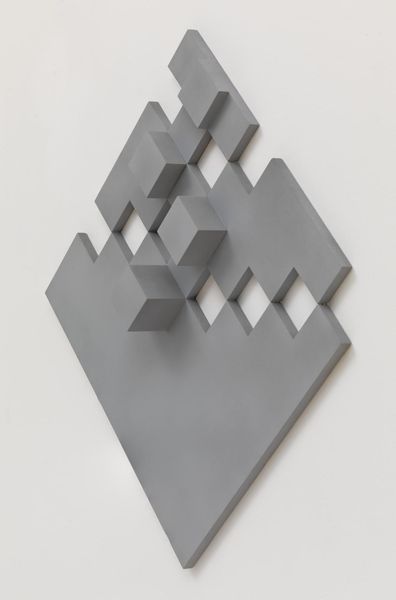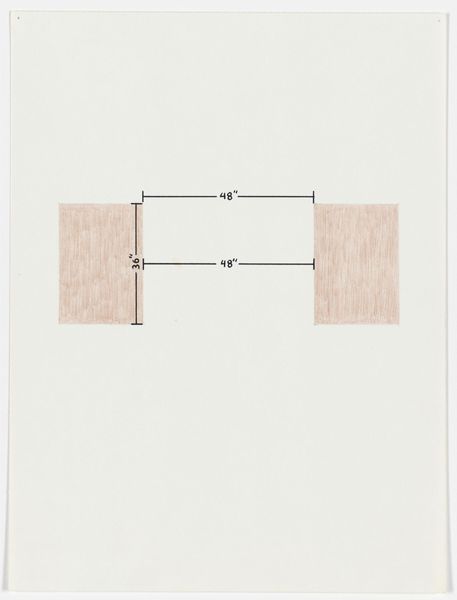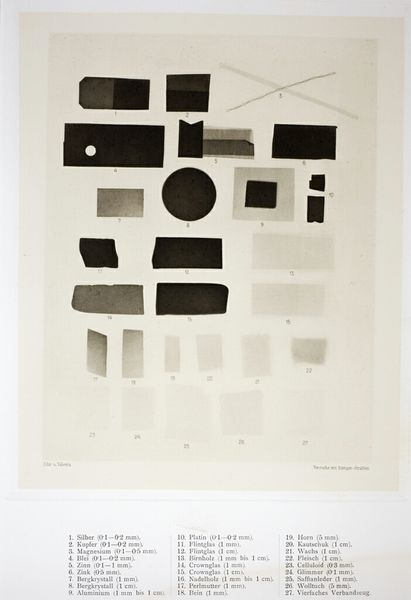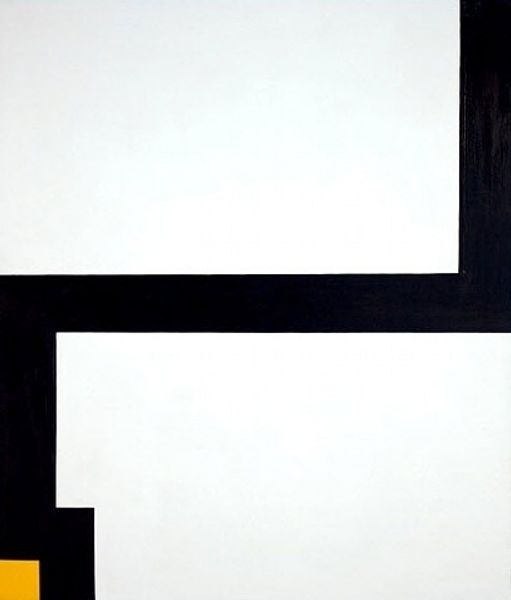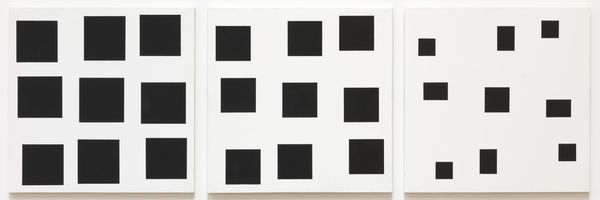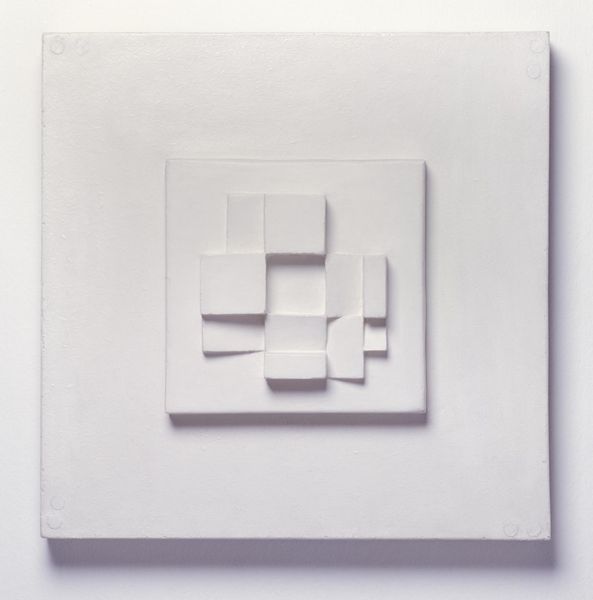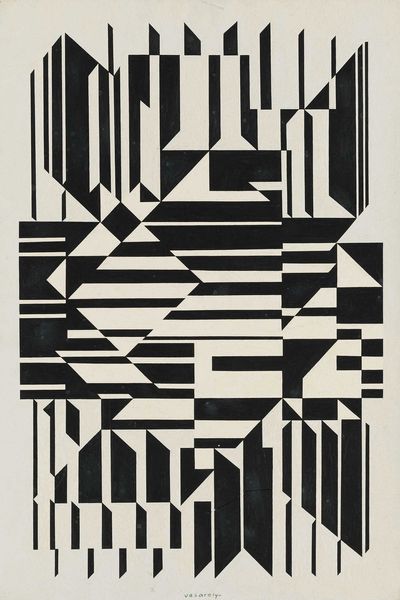
Dimensions: object: 1105 x 914 x 48 mm
Copyright: © Anthony Hill | CC-BY-NC-ND 4.0 DEED, Photo: Tate
Editor: Anthony Hill's "Relief Construction," housed here at the Tate, is so striking in its stark black, white, and gray palette. The geometric forms feel very precise. What do you see in this piece? Curator: Notice how Hill employs the language of Minimalism, yet introduces an element of playful ambiguity. Do these forms feel machine-made or handcrafted? The interplay of light and shadow suggests not just geometric perfection, but a kind of coded language. Editor: That's interesting – a coded language? Curator: Consider the ladder motif. Ladders are powerful symbols of ascent, progress, and even spiritual striving across cultures. How does Hill subvert or complicate that symbolism here? Editor: It's not a clear ascent at all – more like an interrupted pathway. I hadn't considered those associations. Thanks! Curator: Indeed. The symbolic disruption offers a fascinating tension.
Comments
tatebritain 8 months ago
⋮
http://www.tate.org.uk/art/artworks/hill-relief-construction-t00567
Join the conversation
Join millions of artists and users on Artera today and experience the ultimate creative platform.
tatebritain 8 months ago
⋮
Anthony Hill began making wall-mounted sculptures, or reliefs, in the 1950s. Newly mass-produced materials such as aluminium and plastic offered fresh possibilities. He said: ‘With these new materials come a new “art object” – the construction.’ Hill championed constructionism – geometric art constructed using new and industrial materials, with a focus on pattern and proportion. He used a mathematical formula to determine the proportion of each element in this work. Gallery label, September 2023
